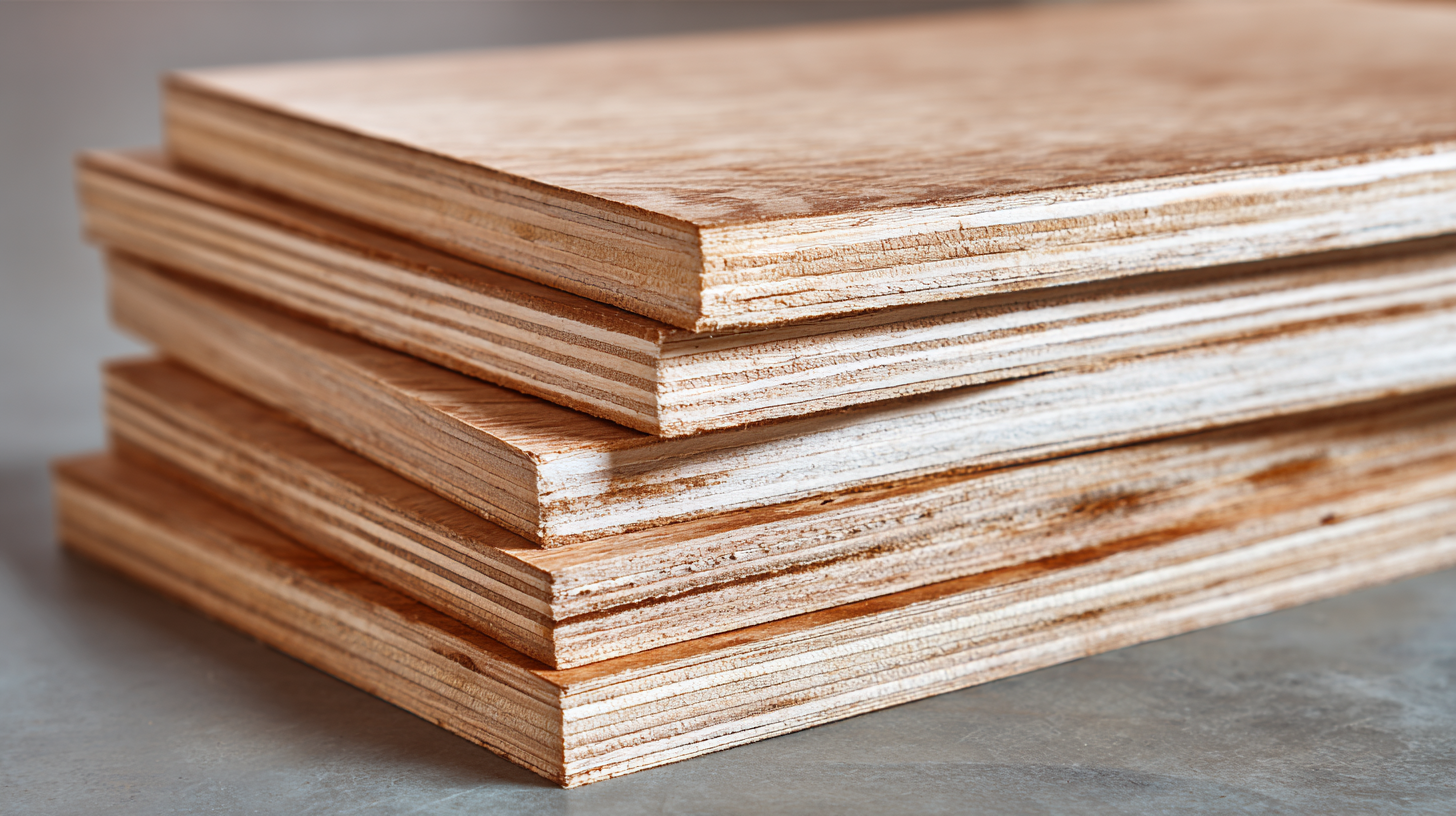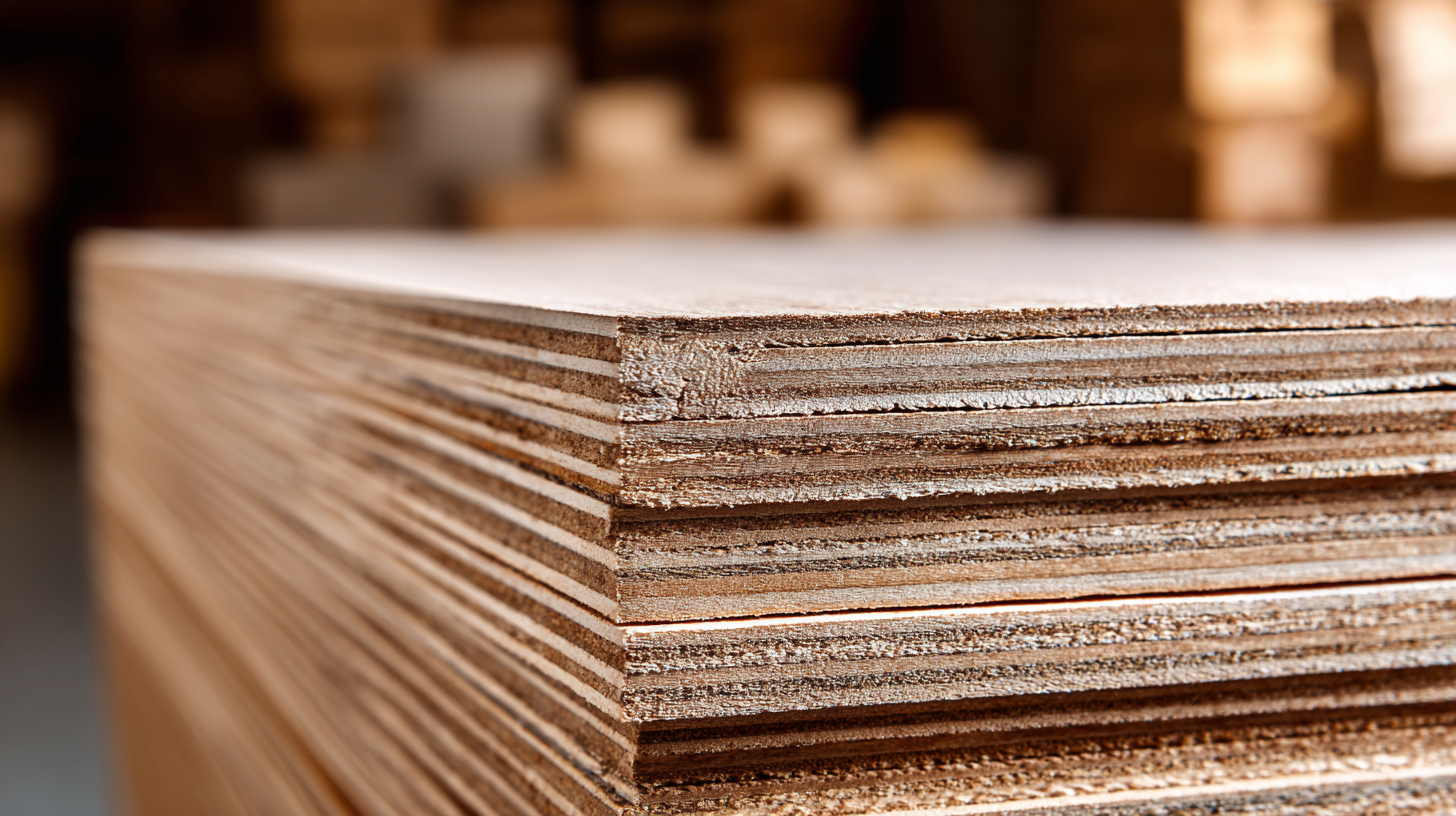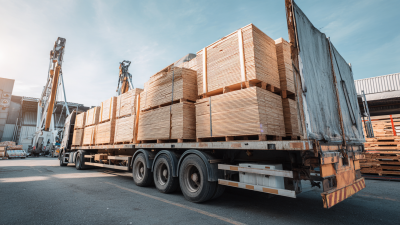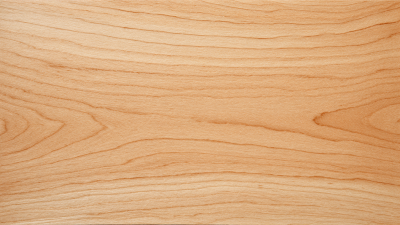When embarking on a DIY project, selecting the appropriate plywood board is a pivotal decision that significantly influences the final outcome. According to a report from the World Plywood Organization, the global plywood market was valued at approximately $44 billion in 2021 and is projected to grow steadily as demand increases for sustainable building materials. With various types of plywood boards available, including softwood, hardwood, and specialty options, understanding the distinctions among them is essential for achieving both functionality and aesthetic appeal in your project. Furthermore, research indicates that the right plywood choice can enhance durability and longevity, making it a critical factor for builders and hobbyists alike. Whether you are crafting furniture, constructing a shed, or creating decorative elements, this guide will empower you to make informed decisions, ensuring that your DIY endeavors are both successful and satisfying.

When embarking on a DIY project, selecting the right type of plywood is crucial to achieving the best results. Plywood is available in various grades and types, each serving different purposes and functionality. Understanding the differences among these options will help you tailor your choice to your specific needs. For instance, if you are working on indoor furniture, consider using furniture-grade plywood, which boasts a smooth veneer surface suitable for staining and finishing. Alternatively, if your project is exposed to moisture, opt for marine plywood, designed to withstand humidity and water damage.

Another important factor is the plywood thickness. Common thicknesses range from 1/4 inch to 3/4 inch, and the choice depends on the structural requirements of your project. Thicker plywood is often preferred for load-bearing applications like shelving or subflooring, while thinner sheets are ideal for lightweight constructions or decorative projects. Additionally, take note of the plywood's core composition—types include softwood, hardwood, and composite—each impacting durability and appearance. By familiarizing yourself with these plywood categories and their characteristics, you can make an informed decision that enhances the success of your DIY project.
When evaluating plywood for your DIY project, understanding its strength and durability ratings is crucial. Plywood is graded based on its veneer quality, adhesive type, and intended usage, with common ratings including A, B, C, and D. For instance, A-grade plywood features a smooth surface with minimal imperfections, making it ideal for applications where appearance matters. Conversely, D-grade plywood may have more knots and defects, which is suitable for hidden structures or subflooring. According to the APA – The Engineered Wood Association, the shear strength of plywood can range from 40 to 50 psi, depending on its thickness and grade, making it important to select a product that meets the specific demands of your project.

Tips: Always check the plywood’s structural rating before making a purchase. Plywood marked with a span rating indicates how far it can extend without support, which is critical for flooring or ceilings. Additionally, consider the exposure durability classification, such as Exterior (EX) or Interior (INT), which informs the plywood’s resistance to moisture. For outdoor projects, choose water-resistant adhesive types like phenolic to ensure longevity.
When selecting plywood, also consider the thickness. Standard thicknesses range from 1/4 inch to 1 inch, with thicker sheets providing greater strength and support. For instance, ¾ inch plywood is often recommended for cabinetry and shelving, given its superior load-bearing capacity as validated by tests from the American National Standards Institute (ANSI) which confirm that thickness impacts performance significantly.
When embarking on a DIY project, selecting the right thickness of plywood is crucial to your project's success. The thickness of plywood determines its strength, durability, and suitability for various applications. For lighter projects, such as creating shelves or decorative items, thinner plywood (around 1/4 inch) may be sufficient. It provides the necessary flexibility while still maintaining a degree of sturdiness. However, for structural projects or those intended to bear significant weight, thicker plywood (1/2 inch to 3/4 inch) is recommended. It offers enhanced stability and can support heavier loads without warping or bending.
The rise of modern craftsmanship, reminiscent of reviving classic gaming experiences, also influences DIY enthusiasts today. Much like how new technologies breathe life into nostalgic games, choosing the appropriate thickness of plywood can transform a simple idea into a lasting creation. Whether you are replicating a beloved childhood game or constructing practical furnishings, understanding the nuances of plywood thickness can be the key to ensuring your project achieves both functionality and aesthetic appeal.
When selecting plywood for your DIY project, understanding the grain patterns and finishes is crucial in identifying the quality of the material. The grain pattern reveals a lot about the plywood's strength and aesthetic appeal. For instance, a straight, uniform grain often indicates higher quality, ensuring stability and reducing the likelihood of warping over time. Beautifully figured grains, such as those found in mahogany or birch plywood, can enhance the visual aspects of your project, making them perfect for furniture or decorative purposes.
In addition to grain patterns, examining the finish of the plywood is equally important. Quality plywood usually boasts a smooth finish, free from knots or surface imperfections that can compromise its durability and appearance. Finishes may vary, ranging from raw boards to those treated with varnish or laminate, which offer added protection against moisture and wear. Choosing the right finish not only impacts the longevity of your project but also influences how well the wood accepts stains and paints, allowing you to achieve the desired look. By carefully evaluating grain and finish, you can select plywood that meets both functional and aesthetic needs for your DIY endeavors.
When embarking on a DIY project, understanding how to properly use and maintain plywood is essential for achieving the best results. First and foremost, selecting the right type of plywood for your project is crucial. Different grades of plywood offer varying levels of durability and finish quality. Using outdoor-grade plywood for projects exposed to moisture ensures longevity, while interior-grade plywood works well for indoor furniture. When cutting plywood, use a fine-toothed saw to minimize splintering and ensure clean edges, and always measure twice to reduce waste.
Once your project is underway, proper maintenance of the plywood can significantly extend its lifespan. Sealing the edges and surfaces with a suitable wood finish or sealant is recommended to protect against moisture and fading. Regular cleaning with a damp cloth and mild soap will help maintain the plywood’s appearance without damaging the surface. If you notice any signs of wear, such as scratches or dents, addressing them promptly with sanding and refinishing can prevent further deterioration. By taking these steps, you can ensure that your plywood projects not only look great but also stand the test of time.
| Plywood Type | Best Use | Thickness (inches) | Price Range (per sheet) | Maintenance Tips |
|---|---|---|---|---|
| Birch Plywood | Furniture, Cabinets | 0.75 | $40 - $60 | Seal edges, avoid moisture |
| Oriented Strand Board (OSB) | Subflooring, Sheathing | 0.5 | $10 - $30 | Keep dry, inspect for damage |
| Marine Plywood | Boats, Outdoor Projects | 0.5 | $70 - $120 | Regular sealing, avoid excessive wetting |
| CDX Plywood | Construction, Sheathing | 0.75 | $20 - $40 | Protect with a weather-resistant coating |
| Luan Plywood | Interior Paneling, Crafts | 0.25 | $15 - $35 | Use clear coat for longevity |







Signup our newsletter to get update information, promotion or insight.